By K.J. Quinn There are many different flooring adhesives, each offering benefits to weigh and pricing to compare. Regardless of the brand, the performance of the material ultimately depends upon its ability to durably and successfully bond floor coverings in a manner that is acceptable to installers. From high-strength construction epoxy adhesives to thinset or thick-bed mortar, the latest glues deliver speed and efficiency while adhering to environmental regulations as green adhesives.
“The latest generation of adhesives are very installer friendly, significantly lower in VOCs and provide assurance of long-term performance,” noted Wayne Williams, Stauf’s director of training.
In the residential market, adhesives are used in a wide range of remodeling and new home construction applications. Materials that are easy to trowel, offer strong bonding and green grab properties are preferred by installers. “For example, in residential, when working with resilient products, it is important to be able to reposition the product if needed,” said David Moore, Mohawk’s senior director of accessories. “But in commercial, you want the product to stick and not move.”
Today’s adhesives are dialed into the critical elements of flooring installations, experts say. For instance, the latest firm-set adhesives for LVT and LVP have tremendous bond and shear strength and are formulated to stand up to the demands of heavy traffic and heavy rolling loads. “Pressure-sensitive adhesives for removable applications, such as carpet tile, have extremely high and long-lasting tack,” noted Jake Stadler, market manager, Bostik. “So that flooring can be repaired and replaced without the need for additional adhesive.”
Modern adhesives
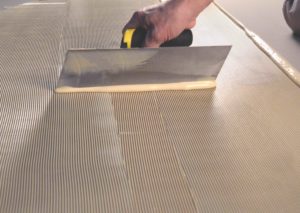
Many of the technical advances center around increases in performance, especially with respect to subfloor moisture. The latest adhesives are formulated to handle tougher subfloor conditions, as installers and contractors look for reduced installation times and less up-front preparation. “From the installation perspective, matching the proper adhesive with the selected floor covering can be quite confusing,” said Gabe Moore, technical director, Taylor Adhesives. “We developed Dynamic [formulated with a recycled polymer and a bio-based material] as a multi-function adhesive that makes it easier for installers because it installs almost all flooring types except for wood.”
While performance and versatility of adhesives have improved, so, too, has the industry’s focus on eco-friendly attributes. “Many adhesives from past generations contained solvents and other petrochemicals that generated much higher levels of VOCs,” Stauf’s Williams noted. “Across the board, today’s adhesive formulas have much lower VOC content.”
Major advances in technology have managed to keep pace with the marketplace’s desire for products that not only assure long-term performance but are more environmentally friendly. For example, the Henry 647 PlumPro Fast-Track vinyl flooring adhesive is a water-based acrylic polymer adhesive with zero VOC content. “Yet, it is moisture rated for up to 99% RH/ASTM F2170, is dry to the touch just mere minutes after applying and the new floor can take traffic immediately,” said David Fabyonic, marketing manager-adhesives, Ardex. “Such characteristics in a water-based adhesive were unheard of not very many years ago.”
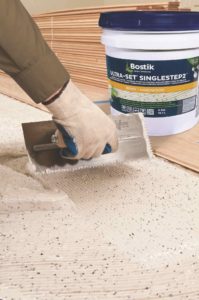
The newest adhesives were developed to comply with stringent and evolving green building standards. “This includes bio-based raw materials within adhesives, solvent and phthalate-free products and a large, concentrated focus on indoor air quality and lower VOCs during and after installation,” Bostik’s Stadler said. “Even down to the packaging the adhesives come in, there has been a huge focus on sustainability.”
The additional emphasis on environmental friendliness is also fueling critical technological achievements. Modified-silane polymers, for instance, are an increasingly utilized form of adhesive that matches the performance of well-established urethanes with the added benefit of cleanability. “The capacity for modified-silane polymer adhesives to be easily cleaned when either wet or cured is a substantial improvement for installers,” said Dave Cima, Eastern sales director, DriTac. “Modified-silane technology is also now compatible with more flooring types than ever before, including both wood and resilient floor coverings.”
Building a better mousetrap, however, is easier said than done. “Our biggest challenge is staying ahead of regulations and making sure we are providing the same features and benefits while avoiding certain chemicals,” Mohawk’s Moore said.
The challenge is to ensure that in complying with ever-changing environmental regulations, application characteristics that installers appreciate (i.e., ease of troweling and fast drying times) and long-term performance are not compromised. “With all the demands to make adhesives greener, it is a battle to make them perform the job they were developed to do,” Stauf’s Williams said. “The flooring industry is constantly changing its products with new type backings that are harder for adhesives to bond to, making that challenge even more demanding.”
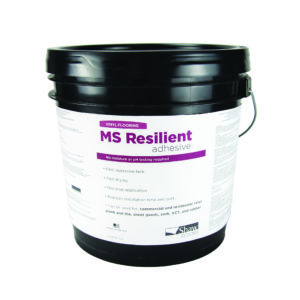
Shaw Industries said it is committed to providing adhesives that exceed customers’ performance expectations while also adhering to its strict sustainability guidelines and principles. “We conduct our own performance testing to verify the research of our vendor partners, addressing any discrepancies before a product goes to market,” said Roger Young, director of sundries category management, Shaw. “Our industry strives to create even more eco-friendly offerings by using bio-based materials as well as low- or no-VOC ingredients.”
The endeavor of producing an environmentally friendly adhesive line comes with other challenges. The cost of manufacturing “greener” solutions is inherently higher than standard adhesives that offer less restrictions on which raw materials could be utilized, industry members say. The additional R&D and product engineering required to meet evolving green standards brings an added layer of both effort and cost.
“Moreover, manufacturers should make the environmentally friendly attributes of their product offerings clear to consumers by conducting independent, third-party testing,” DriTac’s Cima said. “These tests can certify whether or not an adhesive meets specific regulations, but they take time, planning and added funding in order to execute.”
Staying current
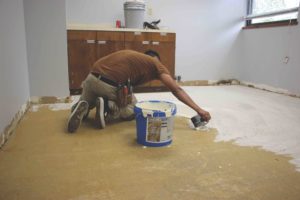
As the flooring installation industry benefits from the explosion of new categories and technologies, it becomes more challenging for installers to stay up to date with trends and ensure they’re using the best solution for the job. Communicating any changes to formulations that impact performance and installation are critical for suppliers. “We are dedicated to educating installers and our customers on the safety and efficacy of any new products to help them feel confident in transitioning to more responsibly made adhesives without sacrificing quality,” Shaw’s Young explained.
Ditto for Bostik, which employs numerous methods to bring contractors up to speed on the latest products. “We offer a range of online trainings and product knowledge sessions, in person, at jobsites, at our distributors as well as being at our training centers,” Stadler said.
Adhesives makers said they are also making it easier for installers to access product information. At Stauf, for instance, there is a QR code on the label of every bucket, so the installer can easily scan and see all the latest directions. “There is also easily obtainable technical help by calling 1-866-GLUE USA anytime during normal business hours,” Williams said.
Taylor supports customers through a direct line to a technical service representative to give real-time advice and guidance. “Taylor also has a mobile app, enabling installers to have installation instructions only a click away at the jobsite,” Moore explained.
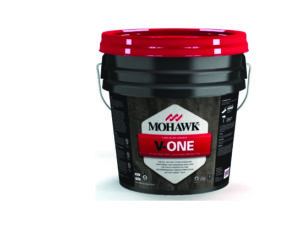
Installers are advised to take advantage of the many trade organizations that offer professional training and diverse certifications. Several offer training seminars and courses to keep installers updated on the industry’s latest advances. “With far more floor coverings and installation methods practiced today than in the past, installers should seek out every opportunity to raise their awareness and expand their expertise,” DriTac’s Cima said.
Installers can also receive support from local adhesive supplier representatives on learning the proper use of their adhesives and how they perform on different surfaces. This can not only boost their knowledge of specific products but help reduce failure rates. “With our technically oriented field sales team, Ardex Americas is on project jobsites every day providing localized support and making product and system recommendations,” Fabyonic said.
